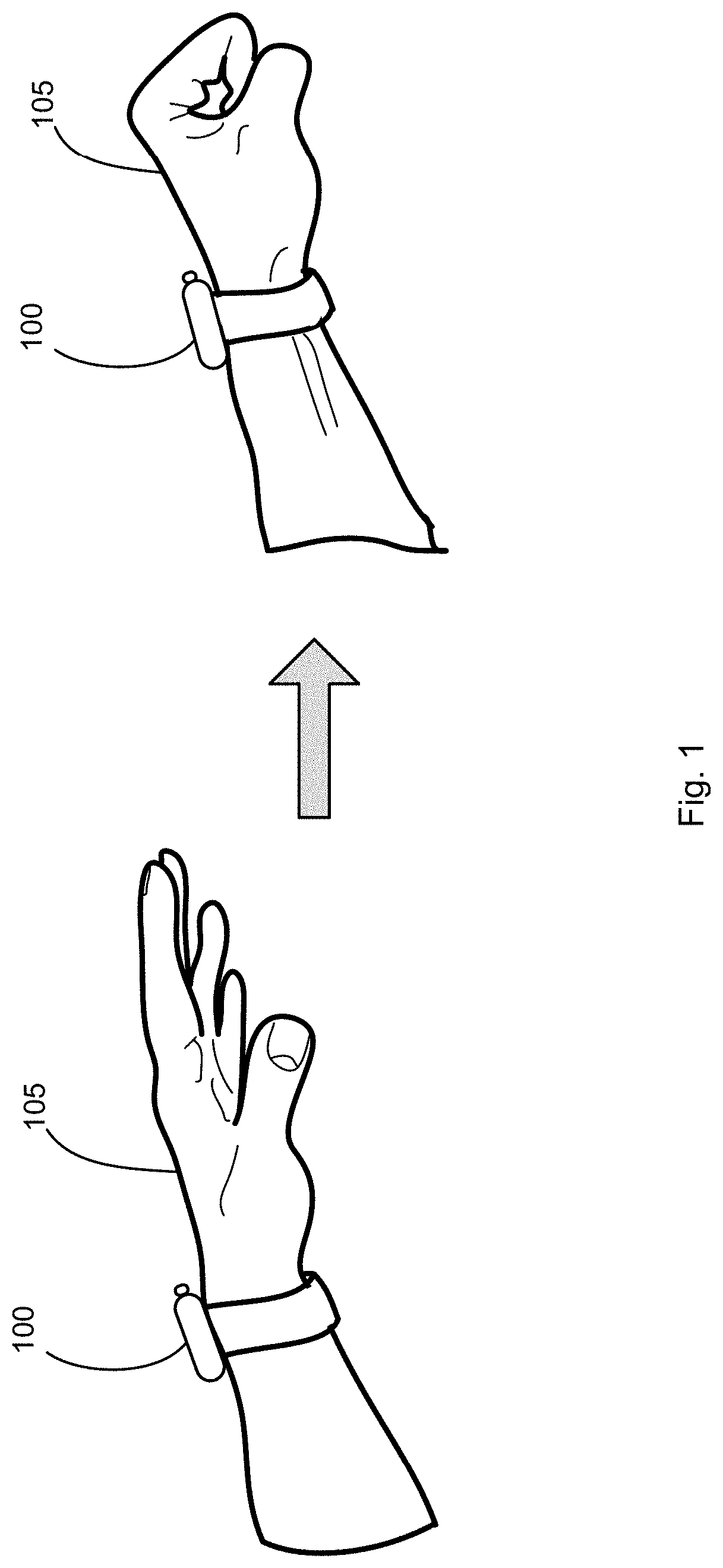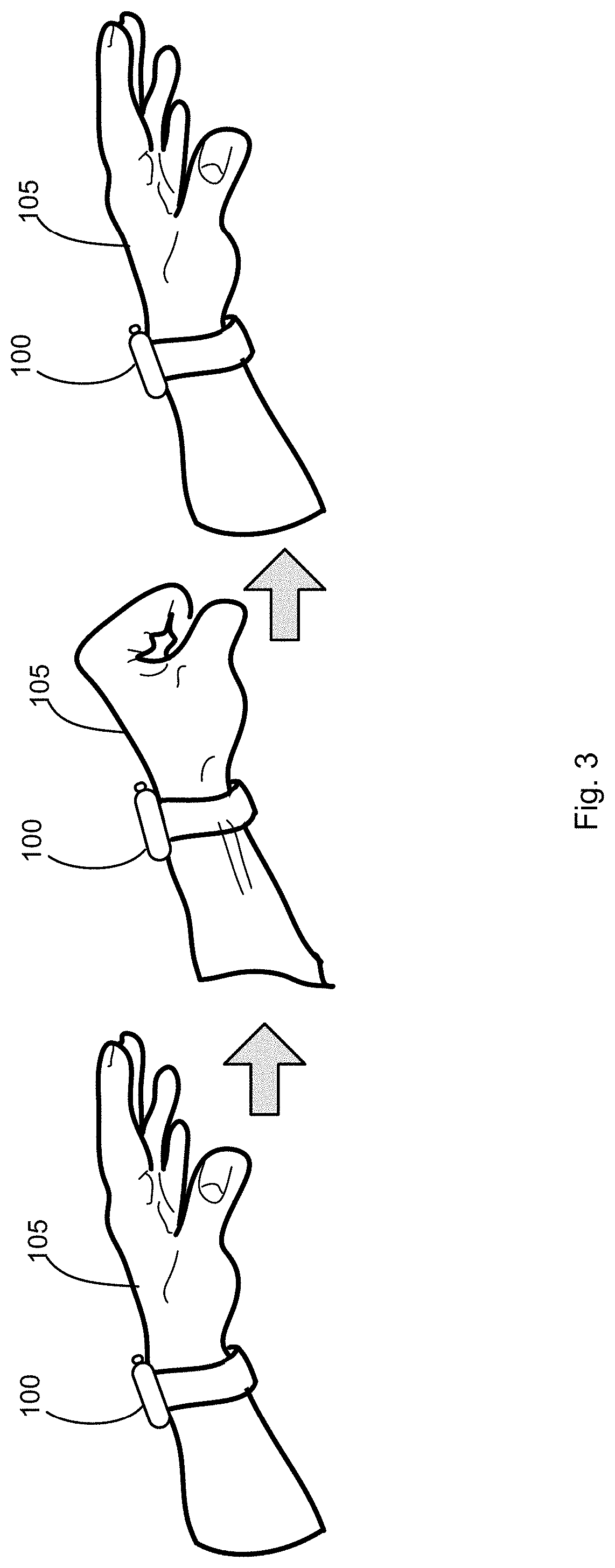Sensing Hand Gestures Using Optical Sensors
a technology of optical sensors and hand gestures, applied in the field of sensing hand gestures using optical sensors, can solve the problems of reducing the convenience of smartwatches, awkward and difficult interactions, and cumbersome touch interactions, and achieve the effect of smooth user experien
- Summary
- Abstract
- Description
- Claims
- Application Information
AI Technical Summary
Benefits of technology
Problems solved by technology
Method used
Image
Examples
Embodiment Construction
[0027]The present disclosure provides for an optical sensor embedded into a watch chassis of a smartwatch, with an algorithm to sense gestures from movements of the user's fingers, wrist, and / or arm on the arm that is wearing the watch. The optical sensor is designed to be small and power-efficient, and the algorithm is designed to be robust to noise and tolerant to user variance. The optical sensor may include, for example, an LED and photodiode. For example, a photoplethysmogram (PPG) signal is used to detect specific physical movements / articulations of the fingers / arm / wrist, which are analyzed as gestures that invoke an action on the watch.
[0028]Raw sensor data from the photodiode is read and processed to reduce noise. Features in the processed data are identified, wherein such features correspond to movements of the wrist, hand, or fingers. A gesture detection algorithm matches these features, and potentially other signals, to a specific gestural action. An interface action is p...
PUM
 Login to View More
Login to View More Abstract
Description
Claims
Application Information
 Login to View More
Login to View More - R&D
- Intellectual Property
- Life Sciences
- Materials
- Tech Scout
- Unparalleled Data Quality
- Higher Quality Content
- 60% Fewer Hallucinations
Browse by: Latest US Patents, China's latest patents, Technical Efficacy Thesaurus, Application Domain, Technology Topic, Popular Technical Reports.
© 2025 PatSnap. All rights reserved.Legal|Privacy policy|Modern Slavery Act Transparency Statement|Sitemap|About US| Contact US: help@patsnap.com



